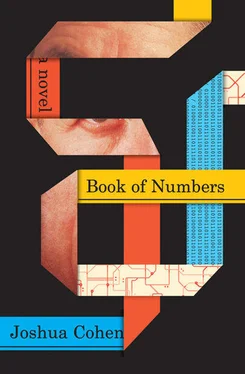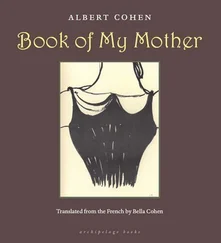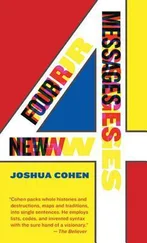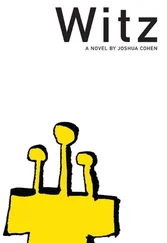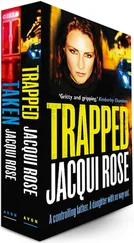Diaspora Jews have inherited not a tradition but a rupture. If we were enslaved, it was to fashion; if we were liberated, it was by wandering the deserts between channels; if we fought wars, they were against our own parents; if we had any true enemies, they were our selves. All generations are condemned to end in death. Only ours was lucky enough to have never lived to begin with.
— POLYN: A LIFE OF MY MOTHER, JOSHUA COHEN
Yehoshuah Kohen was born in the shtetl of Bershad, on the Southern Bug, halfway between Kiev and Odessa, Russian Empire, presently Ukraine. The old century was dying, and the new century lurking just beyond the fields, lying in wait in the snowy woods would be no consolation. By the goyimChristians, it was 1870/71. In an heirloom Bible, the family Kohen recorded only FUCK ME BEGIN LATER
://
from the Palo Alto sessions: We were born in the year of the microprocessor, LGBT Pride Month, the Day of the Death of Mohammed [June 8, 1971]. M-Unit a retired gender studies professor at UC Berkeley, D-Unit an engineer, Xerox-PARC. Basically he was one of the inventors of personal computing. Which meant, he used to say, he took computing personally. We grew up in a white splancher in Crescent Park [Palo Alto]. A good neighborhood too überaware of its goodness. Lots of cool subdued kids. Lots of cool hippie parents. Kindergarten was at Berkeley. A totally egalitarian viro. M-Unit and D-Unit alternated breakfasts, spelt pancakes, stevia quinoa. We had chore charts, surprise room cleanliness inspections. We collected dinosaur eggs, coprolite, ambered insects, pyrite. We memorized the chart of Mendeleev, which hung on our ceiling. We were picked on at school for our [INCOMPREHENSIBLE — wardrobe?], which was sewn by parental friend [INCOMPREHENSIBLE — Nancy Apt?], the back fabrics of the chinos and buttondowns different from the fabrics in front. We were raised to mistrust brands, to be a proactive consumer, a prosumer. All adults were academics. Primiparousness was the norm.
://
Communication is a useful [tool [way] to understand Cohen’s family.Cohen’s was a family [consumed subsumed] by communication [communications/communications systems]: His father, Abraham, was one of the prime innovators of laid many of the most important foundations for worked on a team that helped establish a few vital technical specifications for the internet — before the web, before the technology had any commercial, industrial, or even military? applications. Not many companies can afford a pure research arm, but Xerox, the photocopy giant, could, and endowed PARC (Palo Alto Research Center) in 1970? thousands of miles away from Xerox corporate headquarters (in Rochester, New York). The PARCys, as employees were called, were free to pursue their projects with minimal supervision, but with minimal support. The innovations that came out of their labs, particularly from the Computer Science Division, set the standards for modern computing. Though Xerox invested in developing none of them, though development costs would’ve been prohibitive.
In 1972, the Computer Science Division built the Alto, the world’s first personal computer [IS THIS TRUE?], which featured a wordprocessing program called Wupiwug, which its programmer Hal Lahasky always claimed was a monster from a scifi book by a writer he’d never name, though it was only an acronym for “What U Press Is What U Get,” an indication that the keystrokes a user made were reflected directly onscreen, and not on a teletype printout. [INSERT HERE A LINE ABOUT LANGUAGES: BASIC, LISP.]
Nascent computing displayed its output on a tick of tape. The monitor followed, a face to face the user’s, light hurled at a pane of glass. The last frontier, or what was regarded as the last frontier, was also the first, paper again. The laserprinter both continued and undermined the Xerox tradition: in that it reproduced, but from a nonexistent original, putting to paper the page of the screen (parenthetically, the laserprinter was the only PARC innovation Xerox ever brought to market, in 1977 debuting the 9700, which averaged TK?? pages per minute, and retailed for $??K). (The output of nascent computing was just text, and not its formatting — to Abraham, the two were inseparable.) The problems he had set out to solve involved what today is called “desktop publishing,” or “design”—namely, how to perfectly reproduce a print artifact onscreen, and then, outrageously, how to render it manipulatable, perfectly printable again.
[However, building on phototelegraphy, which had been around since the 19th century, and the shift from wire to wireless facsimile, which occurred just after the turn of the 20th, Xerox’s main interest in documents remained in their reproduction, and in their reproduction through transmission, not in their manipulation. All distances had to be bridgeable, as far as Xerox was concerned — the distance between PARC and RochesterStamford, CT, to which Xerox moved its HQ in 19?? was not.] While Abraham’s colleagues were focused on [creating the] transmission protocols between computers[, and computers and printers], and constructing the Ethernet — a local area network [explain] that allowed machines, and the people who made them, to communicate with one another virtually — Abraham was alone in his fixation. He spent 14 years at PARC huddled with scanners that still functioned with tubes, surrounded by hunched engineers who’d already been graduated to transistors and circuits.
While the character recognition program was relatively simple to code [WHAT WAS IT CALLED?], as were the modifications to Wupiwug that allowed user modification of the recognized characters, it was the image that proved frustrating. The images scanned well [do scanners work the same way as photocopiers or fax?], but Abraham was never able to code an interface that pleased him. Every graphics program he invented was either too rudimentary, or [the opposite of rudimentary?] intricate. He experimented with raster and vector, with dividing the graphics into 2D “spatches,” into 3D “layers,” but his lack of progress led to a lack of resource availability, and in 1984, with PARC reorganized under new management, Abraham’s unit was mothballed, and he was transferred to another [BUT WHICH?].
He would joke to his son that this was the fate of the Jews — to be stymied by the image.
[[OPENING VERSION 1 BIOGRAPHY: One hundred years before PARC’s inception, Yehoshuah Kohen was born in 1870, in the shtetl of Bershad, on the Southern Bug, halfway between Kiev and Odessa, Russian Empire, presently Ukraine.
Bershad was a textile town, and antisemitism was a familiar thread. Upon returning from a spell at the yeshiva of Koretz, Yehoshuah married Chava Friedgant, the youngest daughter of a family of weavers, and it was weaving that supported Yehoshuah’s life of study and prayer, and the life of their son, Yosef, born 1895. In 18?? however, a pogrom was sparked [a pogrom sparked how?], and burned the Jewish textile warehouse [but only one warehouse?]. Theirs was a tragedy so common to the milieu that it can only become banal by repetition.
Regardless — wagon to Uman, trains to Lvov, Warsaw, Berlin, Hamburg — the family took a steamship to America, bundling with them a single trunk, and Yosef. Ellis Island records attest to an arrival of April 4, 1901. The year of the Edison battery and the transatlantic radio, the death of Queen Victoria and the assassination of McKinley, annus Rooseveltus . The first day of Passover 5661.
They settled on Orchard Street, on the East Side of New York City, where Yehoshuah — now “Cohen”—found a job as an iceman, initially cutting that substance from the East River, before being promoted to assistant deliverer (an innate sense for horses and geography), to chief deliverer (developing English and manners), cut manager, assistant payroll. But when his payroll chief married the daughter of the ice concern’s owner, he left. The man was a fellow immigrant, but from Uzhgorod [, Ungvar in Yiddish], who considered Yehoshuah a peasant[, which he was]. But he was also a natural businessman.
Читать дальше
